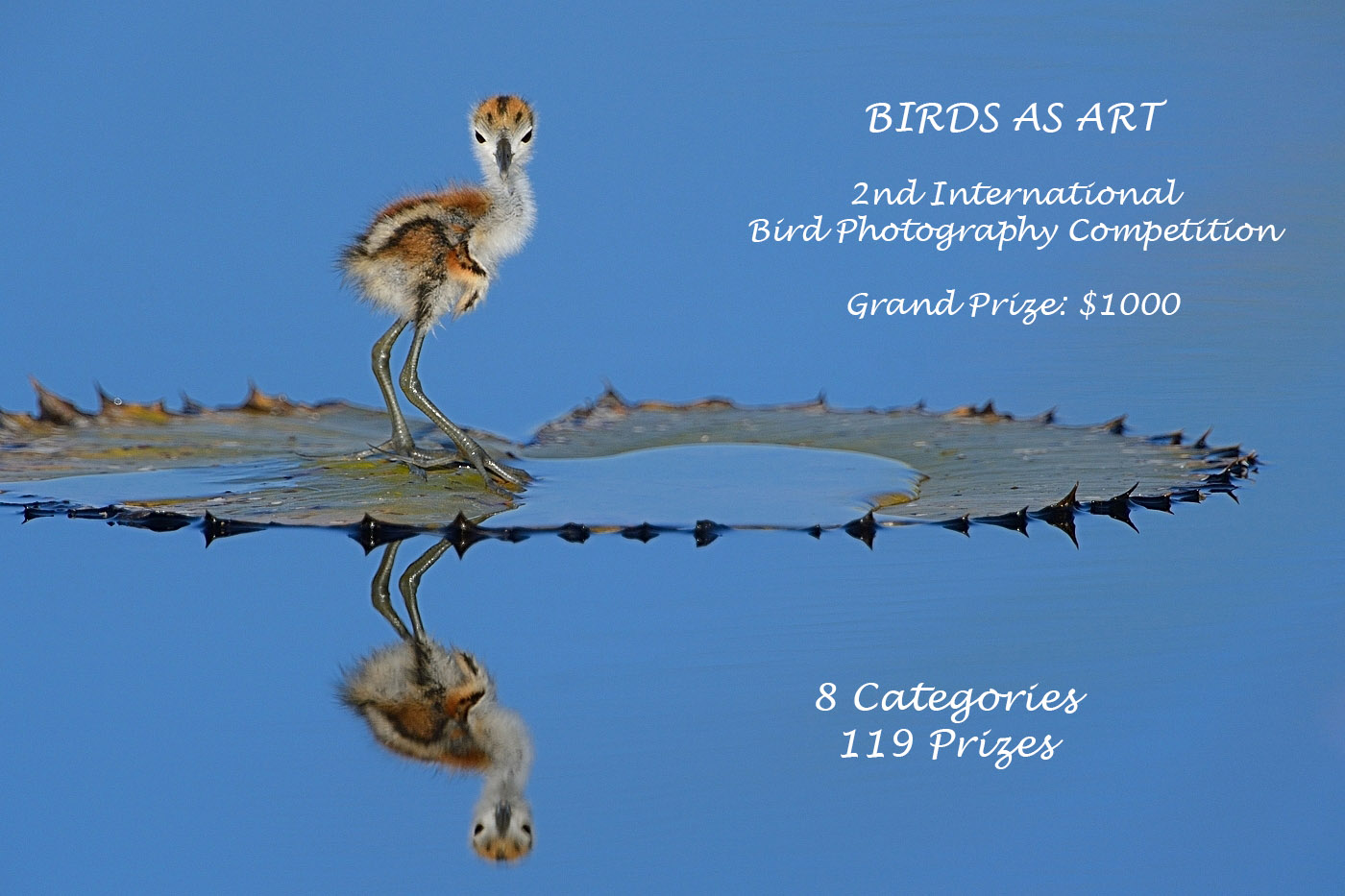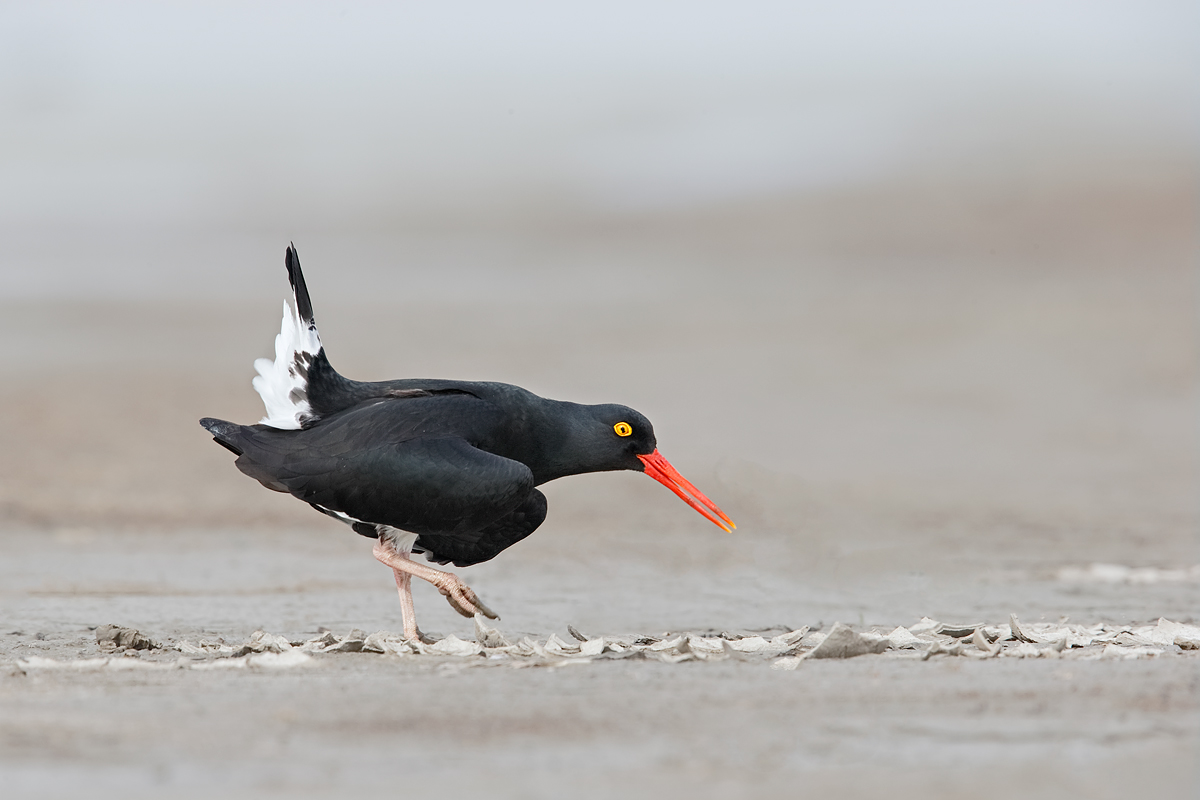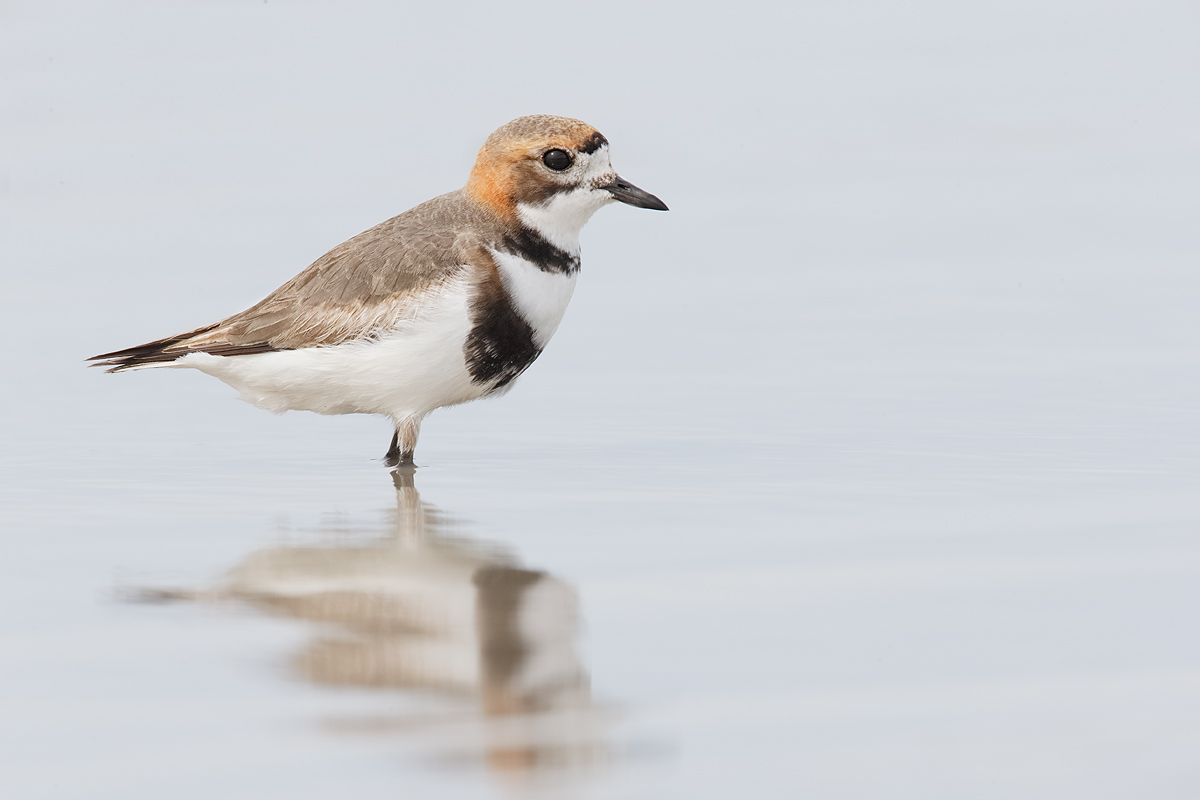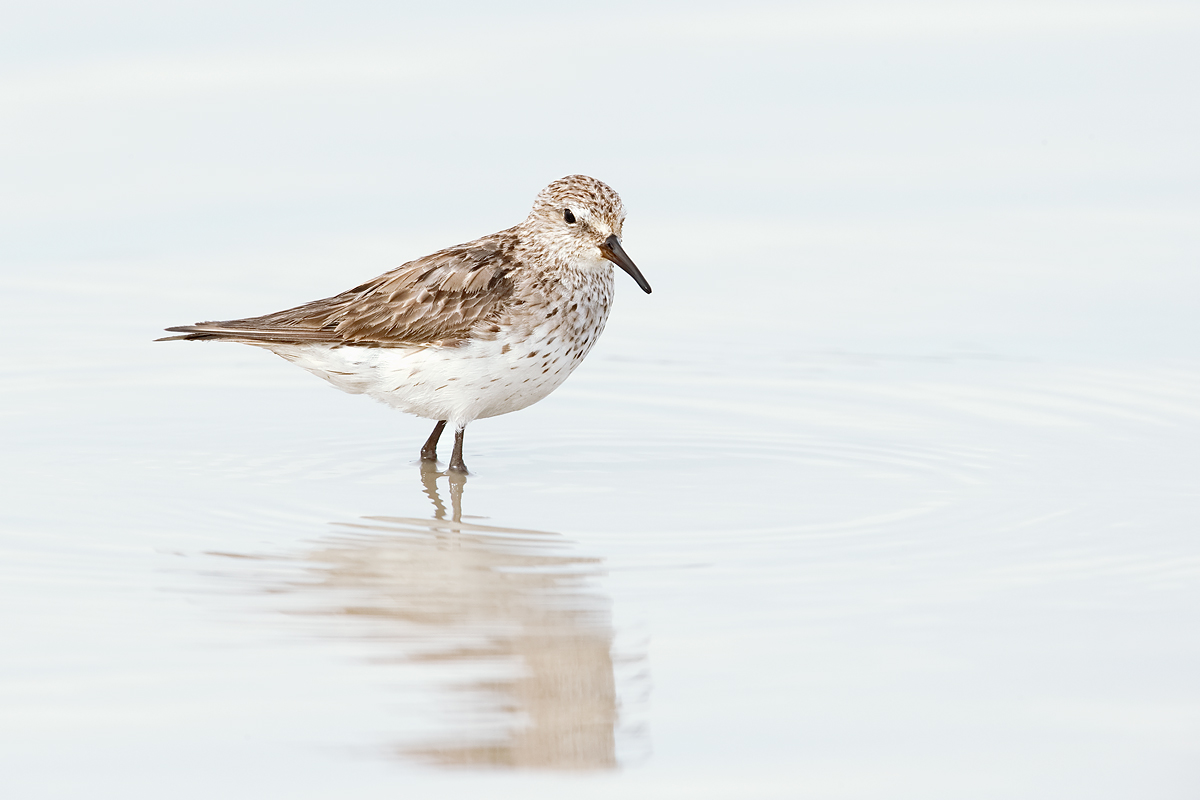|
This Magellenic Oystercatcher image was created with the Gitzo 3532 LS carbon fiber tripod, the Mongoose M3.6 head, the Canon EF 600mm f/4L IS II USM lens, the Canon 2x EF Extender III (Teleconverter), and the Canon EOS-1D X. ISO 800. Evaluative metering +1 stop as framed: 1/500 sec. at f/10 in Manual mode. Central sensor (by necessity) Expand/AI Servo Rear Focus AF one inch behind the eye active at the moment of exposure. Click on the image to see a larger version. |
Magellanic Oystercatcher
With its sleek, deep-black feathers and slightly less bulky carriage, this species seems more elegant and beautiful than its close relative, American Oystercatcher. It had been giving me fits for days on the Patagonia trip as far as photography goes, often allowing close approach but… Wind against light, lousy setting, can’t see the feet, all the usual image wreckers. At Morro Chico Step we stopped at a pond with several pairs. For the first two hours it was more fits. Then I decided to just sit on the cracked mud behind my lowered tripod and wait for the birds to come to me. This bird and two others landed nearby and began displaying. Both the raised foot and the perfect look-back head angle added to the success of the image.
|
This Double-banded Plover image was created with the Gitzo 3532 LS carbon fiber tripod, the Mongoose M3.6 head, the Canon EF 600mm f/4L IS II USM lens, the Canon 2x EF Extender III (Teleconverter), and the Canon EOS-1D X. ISO 800. Evaluative metering +1 2/3 stops: 1/500 sec. at f/13 in Manual mode. Central sensor (by necessity) Expand/AI Servo Rear Focus AF on the bird’s eye and re-compose. Click on the image to see a larger version. |
Double-banded Plover
This rather sedentary species is relatively common in Patagonia in the right habitat. I had seen it previously on the Falklands in gorgeous light. But the bird was sporting an array of color bands so the experience left me rather unfulfilled. There were several pairs on the small lake and at least one pair had a nest; one of the birds was doing the rodent-run nest distraction display, walking away from us with its chest down while shaking its outstretched wings.
Here again, the patient approach worked well; sit on the dried mud and wait for the birds to approach.
|
This White-rumped Sandpiper image was created with the Gitzo 3532 LS carbon fiber tripod, the Mongoose M3.6 head, the Canon EF 600mm f/4L IS II USM lens, the Canon 2x EF Extender III (Teleconverter), and the Canon EOS-1D X. ISO 800. Evaluative metering +1 2/3 stops: 1/640 sec. at f/10 in Manual mode. Central sensor (by necessity) Expand/AI Servo Rear Focus AF on the side of the bird’s breast active at the moment of exposure. Click on the image to see a larger version. |
White-rumped Sandpiper
White-rumped Sandpiper is a fairly common long distance migrant Calidris in the northeastern US, an old friend that I saw regularly in summer and early fall in my old haunts, the East Pond at Jamaica Bay Wildlife Refuge, Queens, NY.
As this species winters exclusively in southern South America, I foolishly expected that it would be fully molted to non-breeding plumage in Chile at this time of year. I forgot that in the northeast, a few molting adult white-rumpeds were seen regularly throughout October. This bird is an extremely worn molting adult. If it were in full breeding plumage, each feather would look fresh and each would exhibit a cold grey tone. None-the-less, it was good seeing an old friend so far from the Big Apple.

|
BIRDS AS ART 2nd International Bird Photography Competition
Learn more and enter the BIRDS AS ART 2nd International Bird Photography Competition here. Twenty-five great prizes including the $1000 Grand Prize and intense competition. Bring your best.
Support the BAA Blog. Support the BAA Bulletins: Shop B&H here!
We want and need to keep providing you with the latest free information, photography and Photoshop lessons, and all manner of related information. Show your appreciation by making your purchases immediately after clicking on any of our B&H or Amazon Affiliate links in this blog post. Remember, B&H ain’t just photography!




Amazon
Everyone buys something from Amazon, be it a big lens or deodorant. Support the blog by starting your search by starting your search by clicking on the logo-link below. No purchase is too small to be appreciated; they all add up. Why make it a habit? Because I make it a habit of bringing you new images and information on an almost daily basis.
Typos
In all Bulletins, feel free to e-mail or leave a comment regarding any typos, wrong words, misspellings, omissions, or grammatical errors. Just be right. 🙂
IPT Info
Many of our great trips are filling up. Two great leaders ensure that you will not learn more anywhere about how to make great images. Click here for the schedule and additional info.

















These shots are breathtaking.
Many thanks Pat. artie
As per your advice; I’ve switched to full manual mode for bird and wildlife photography. It helps a lot to expose the subjects as per my desire. Now, all categories of my images are shot in manual mode.
Thanks for the guidance Guru.
The first image of Oystercatcher is great.
However, most amazing part to me is, EOS-1Dx did AF at f/10 with 2x extender on! This is great news.
Thanks.
Artie, as you suggest, it has been my experience that one of the better ways to shoot certain subjects is to determine where they tend to hang out, and then just quietly sit near by and wait for them to return.
As always, lovely images.
Beautiful classic images of shorebirds with lovely clean, soft backgrounds! Good lesson about the sit & wait approach, but one I find very difficult to do when I am thousands of miles from home and don’t want to miss a thing during the few days I am there. Thanks for creating these posts while you are still traveling. It’s fun to see what is happening almost in real time.
Great shots. I love seeing the cousins of the birds I see here in FL, so similar yet so different. Glad to see you use the patient approach as well. On days when an active approach isn’t working I often find myself picking an optimum spot, with a great background, and waiting for the birds. It’s nice to slow down and take in the moment while waiting for the quarry.